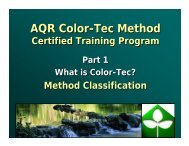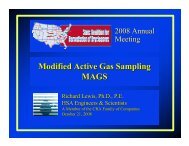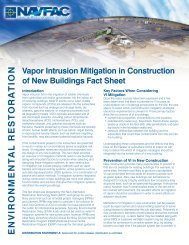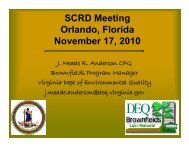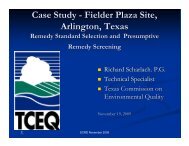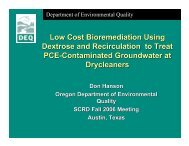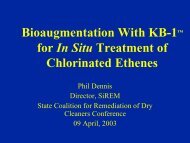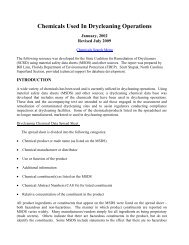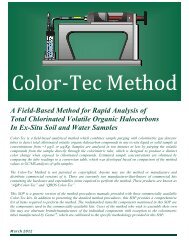Use of Environmental Forensics In Drycleaning Investigations
Use of Environmental Forensics In Drycleaning Investigations
Use of Environmental Forensics In Drycleaning Investigations
- No tags were found...
You also want an ePaper? Increase the reach of your titles
YUMPU automatically turns print PDFs into web optimized ePapers that Google loves.
Metal Cleaning v. Dry Cleaning (a)Metal Cleaning Traditionally contained a higher concentration<strong>of</strong> additives than most dry cleaning grades. Classes include acidacceptors, antioxidants, and UV stabilizers. Antioxidants includeamine or phenolic compounds 50 – 200 ppm and acid acceptorsepoxide 0.2-0.7%. Early PCE formulations included alkylaminesand other hydrocarbons. Later stabilizers included morpholinederivatives, epoxides, esters and phenols.Dry Cleaning Traditionally contained a high concentration <strong>of</strong>additives, usually <strong>of</strong> a high purity and different types <strong>of</strong> additives.DOWPER-C-S contains a water soluble detergent, a corrosioninhibitor, an anti-static compound, “hand agent” compounds, anda fatty acid scavenger.





